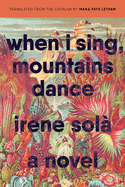
| Publisher: | Graywolf Press | |
| Genre: | Nature & the Environment, Literary, Fiction | |
| ISBN: | 9781644450802 | |
| Pub Date: | March 2022 | |
| Price: | $16 |
| Starred | Fiction |
by Irene Solà, trans. by Mara Faye Lethem
Catalan author and artist Irene Solà concocts a heady mixture of folklore, poetry and humor in her European Union Prize-winning novel, When I Sing, Mountains Dance. In a vibrant evocation of the Pyrenees, the mountainous borderland between Spain and France, Solà achieves a panoramic sense of place by leaping between perspectives with a verve that lends an animating energy to every facet of the land and its creatures.
Each of the chapters in Solà's novel features a distinct narrator, only some of them human. Leading the cavalcade is a pack of storm clouds, with "black bellies, burdened with cold, dark water, lightning bolts, and thunderclaps." When Domènec, a farmer foraging for black chanterelle mushrooms, stops to rescue a calf ensnared in a jumble of wires, the clouds send a bolt crashing down on his head, killing him. This scene, with its startling blend of bucolic beauty and elemental violence, is Solà's vision of the Pyrenees in microcosm.
With Domènec's untimely death as her point of origin, Solà traces a tangled network of associations and encounters that bring the mountains and their inhabitants to life. What emerges is a sprawling, multigenerational portrait of tragedy and perseverance rendered in jubilant, adventurous prose; that so much genuine profundity is housed in a book so deceptively slim is testament to Solà's skill. Never stopping to gawk at her own sublime creations, she instead takes after the black chanterelles, to whom eternity is "a thing worn lightly. A small thing, an everyday thing." --Theo Henderson, bookseller at Ravenna Third Place Books in Seattle, Wash.
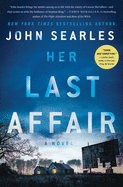
| Publisher: | Mariner Books | |
| Genre: | Psychological, Literary, Suspense, Thrillers, Fiction | |
| ISBN: | 9780060779658 | |
| Pub Date: | March 2022 | |
| Price: | $27.99 |
| Mystery & Thriller |
by John Searles
Love and revenge commingle until it's almost impossible to tell one from the other in the fascinating, character-driven Her Last Affair. As in his previous three novels, John Searles's low-boil plot hinges on slowly but forcefully building suspense, while subtly dropping clues to the characters' psychological makeup.
The novel presents the personal stories of three tenuously connected characters. In upstate New York, retired nurse Skyla Hull, nearly blind from macular degeneration, long believed she had a solid marriage to Hollis, one that lasted nearly 50 years. But before he died in a freak accident last year, she learned he was unfaithful with a woman she knows. Skyla is now ready to rent her nearby cottage, which is 26 steps from her own front door and in the shadow of the decaying Schodack Big-Star Drive-in she and Hollis inherited from his parents. Her tenant is Teddy Cornwell, an Englishman who charms Skyla so much that she forgoes a background check. During dinner, Teddy mentions that he still pines for his first love, Linelle Dufort, whom he learns is discontented with her marriage. Meanwhile, failed novelist Jeremy Lichanel plans to look up a former crush when he is in Providence, R.I., for a freelance writing assignment.
Searles (Help for the Haunted) brings intelligent insight to his characters, keeping Her Last Affair on an upward trajectory as he adds little quirky secrets, such as the unusual things Skyla carries in her pockets, Teddy's past or Jeremy's financial situation. All of this builds to a stunning denouement. Each of the characters desperately wants love, yet are not above indulging in revenge. --Oline H. Cogdill, freelance reviewer
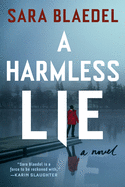
| Publisher: | Dutton | |
| Genre: | Mystery & Detective, Crime, International Crime & Mystery, Suspense, Thrillers, Fiction | |
| ISBN: | 9780593330944 | |
| Pub Date: | March 2022 | |
| Price: | $17 |
| Mystery & Thriller |
by Sara Blaedel, trans. by Mark Kline
Sara Blaedel's mysteries featuring Detective Louise Rick have made her something of a sensation in her native Denmark. A Harmless Lie, translated by Mark Kline, should shore up her international reputation as the author of psychologically attuned thrillers centered on two strong women whose personal lives are as messy as their work.
Louise is on leave from the Copenhagen Police and getting over a breakup when her brother, Mikkel, attempts suicide. Soon after Louise gets this news, she learns that the mummified body of Susan Dahlgaard, a 14-year-old who disappeared on a school field trip to Bornholm more than two decades earlier, has been found in a cave on the island. One of Susan's friends on the trip was Mikkel's wife, Trine, whose recent apparent flight--she has a history of leaving him--spurred his suicide attempt. As Louise negotiates family matters, her best friend, crime reporter Camilla Lind, is writing about Susan and wonders if Trine's disappearance around the time the girl's body was discovered is related.
Once A Harmless Lie finishes its shaggy recap of the interpersonal dynamics established in previous Louise Rick titles, it becomes a full-blown mystery with an ending hard to anticipate. The reliably humane Blaedel (The Drowned Girl) includes a sympathetic outsider, as she has done previously. This time it's a bug-obsessed outcast whose questionable claim that she possesses psychic abilities doesn't necessarily preclude the possibility that she is occasionally right. --Nell Beram, author and freelance writer

| Publisher: | Forever | |
| Genre: | Women, Small Town & Rural, Romance, Contemporary, Workplace, Fiction | |
| ISBN: | 9781538703137 | |
| Pub Date: | March 2022 | |
| Price: | $8.99 |
| Romance |
by Barb Curtis
Romance fans who enjoy wholesome, heartwarming stories will find much to treasure in the last book of Barb Curtis's Sapphire Springs trilogy.
The first book, Forever with You, was an obstacle-laden love story between a local family vintner and a restaurant owner. Only for You, book two, centered on a faux-romance between the local baker and a reality-TV celebrity seeking refuge in town. In the final book, Falling for You, Faith Rotolo, a newcomer to Sapphire Springs--a divorced, world-traveling, free-spirited yoga instructor in her mid-30s--is bequeathed a historic Victorian home by her maternal great uncle. Why would a man she barely knew leave her his house?
Instead of selling the dilapidated property, Faith is intrigued enough to stay on in the welcoming small town and learn more. During the restoration of the old mansion, she meets Rob Milan, a jaded financier-turned-contractor with a sordid past. This divorced single father of two battles his ex for custody--complicated by his jail time for assault after he found his wife and his former boss in flagrante delicto. Faith and Rob butt heads during the restoration, but the connection between them deepens when Faith helps Rob deal with anger-management issues. Amid a burgeoning romance, the couple uncover mysterious secrets tied to the house that draw them closer and challenge their feelings for each other.
With comforting charm, Curtis's tender, closed-door romance series explores themes of small-town life, tangled family legacies and feel-good surprises on the road to love. --Kathleen Gerard, blogger at Reading Between the Lines
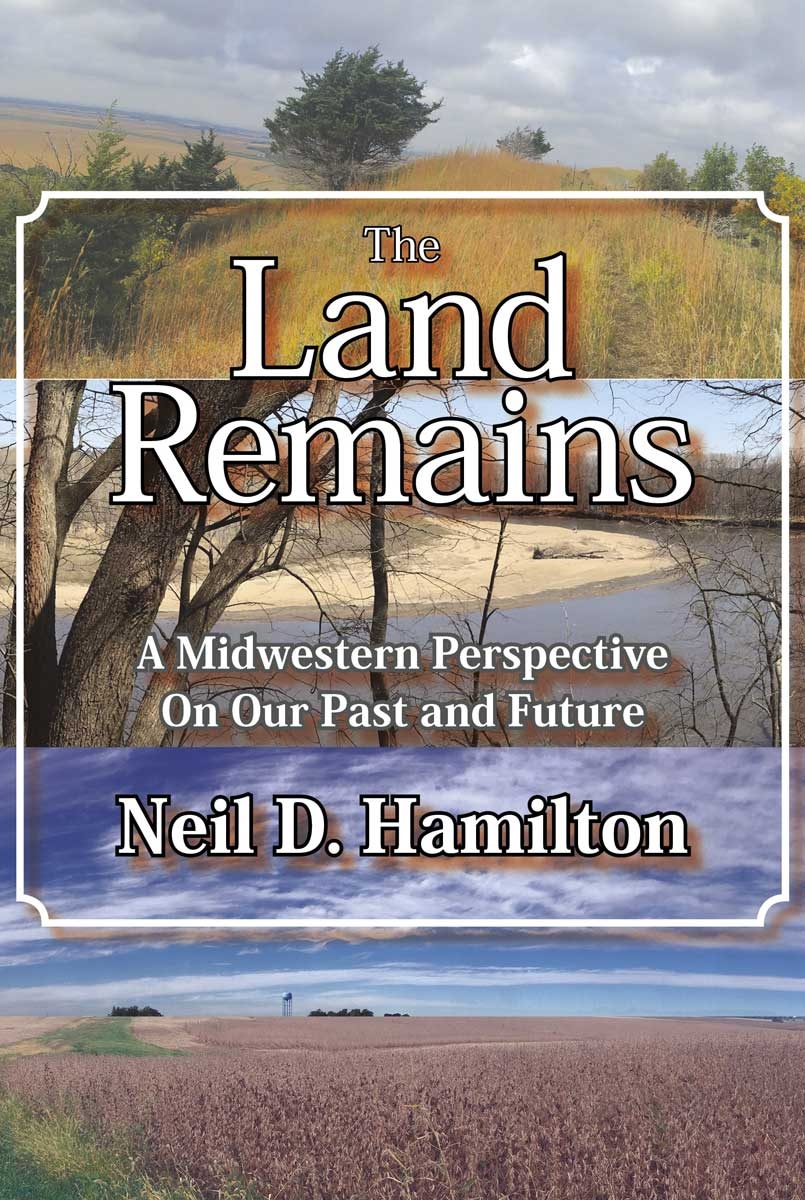
| Publisher: | Ice Cube Press | |
| Genre: | Nature, Agriculture & Food (see also Political Science, Public Policy, Environmental Conservation & Protection, Agriculture & Food Policy, General, Social Science, Public Policy - Agricultur, Political Science | |
| ISBN: | 9781948509336 | |
| Pub Date: | April 2022 | |
| Price: | $24.95 |
| Starred | Nature & Environment |
by Neil D. Hamilton
Humankind enjoyed stunning population growth in the 20th and early 21st centuries, largely sustained by pioneering agricultural techniques that fed billions of people around the world. However, as Neil D. Hamilton writes in The Land Remains, a monomaniacal focus on agricultural production growth has obscured proper reverence for the conditions that make growing things possible at all.
Hamilton (The Legal Guide for Direct Farm Marketing) is an agricultural lawyer, conservationist and family farmer. He combines impressive conceptual and firsthand expertise with formidable research and testimonies to argue that the United States must transform its approach to farming and land stewardship if it is to continue to reap the great bounty of its fertile land. Though haunting images in stories like John Steinbeck's The Grapes of Wrath once imposed a proper respect for the land's weaknesses, the cultural memory of them--and the visionary leaders such traumas gave rise to--have faded. Today, far too much U.S. agricultural practice ignores techniques that are necessary to ensure that the land, and those who depend on it, can survive.
Hamilton writes with serious purpose but also a joyful heart. He is deeply familiar with farming, farmers and the vast constellation of corporations, interest groups and institutions that seek to feed the world but also, in many cases, maximize their profits. While fair-minded and compassionate, his writing is unsullied with false equivocation or feeble bromides about the supposed costs of doing business. The Land Remains is sobering and, at times, frightening, but it offers the inspiration of hopeful wisdom. --Walker Minot, teacher, freelance writer and reviewer
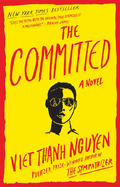
| Publisher: | Grove Press | |
| Genre: | Espionage, City Life, Literary, Thrillers, Fiction, Noir | |
| ISBN: | 9780802157072 | |
| Pub Date: | March 2022 | |
| Price: | $18 |
| Now in Paperback |
by Viet Thanh Nguyen
Viet Thanh Nguyen's sequel to his 2016 Pulitzer Prize-winning novel, The Sympathizer, is a dark and comic investigation of themes that include identity, morality and the clash of civilizations brought about by French and American colonialism. Above all, it is both a striking standalone novel and an impressive successor to Nguyen's earlier work.
Set in Paris in the early 1980s, the novel relies on the beguiling voice of the same unnamed narrator, now in his mid-30s, whose worldview has been shaped by the fact that he's the son of a Vietnamese mother and a French Catholic priest. He's made his way to France from an Indonesian refugee camp after a stint in a communist reeducation program, which followed his service as a murderous double agent in California after the war's end in 1975.
To say that the narrator quickly falls in with an unsavory crowd would be an understatement. The "worst Asian restaurant in Paris" where he works is a front for a ruthless Vietnamese drug and prostitution ring. When he makes the mistake of treading on the turf of a competing Arab gang, he finds himself enmeshed in a violent rivalry. As he fights for survival in this merciless world, he's haunted by the ghosts of his victims in the United States, and desperately hopes to conceal the full knowledge of his past from his blood brother Bon, a rabid anti-communist whose wife and daughter died during the fall of Saigon.
Nguyen (The Refugees) is a literary virtuoso, and The Committed is a multilayered story that will appeal to a wide and varied audience. --Harvey Freedenberg, freelance reviewer
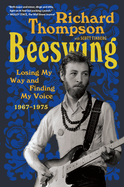
| Publisher: | Algonquin | |
| Genre: | Biography & Autobiography, Music, Genres & Styles, Artists, Architects, Photographers, Folk & Traditional | |
| ISBN: | 9781643752532 | |
| Pub Date: | March 2022 | |
| Price: | $16.95 |
| Now in Paperback |
by Richard Thompson, Scott Timberg
Although guitarist and singer-songwriter Richard Thompson was born in 1949, his lovely memoir, Beeswing: Losing My Way and Finding My Voice: 1967-1975, starts when he's 18. The book does dip back in time, as to touch on young Thompson's quest for a guitar (by age 11, "posing in front of a mirror with a tennis racquet would no longer suffice"), but fittingly, Beeswing really begins when Thompson's life begins: when he becomes a musician.
Thompson was a founding member and, while he was in the group, the guiding spirit of the mythic British folk rock band Fairport Convention. In Beeswing, he chronicles his early days--both with and without Fairport, both on and off the road--with specificity and an utter lack of pretention. Fans will quaver as Thompson walks readers through the album tracks he worked on and shares his impressions of his peers, including the mercurial singer Sandy Denny ("She possessed a tremendous empathy for others. She lacked a layer of skin"), who died at age 31. Thompson comes across as a visionary holding firm against the dominating influence of American rock in order to create a distinctly British musical sound.
Beeswing leaves off in the mid-1970s, not long after Thompson has embraced Sufism and while he's making now-iconic records with his then-wife, Linda. One needn't be an acolyte of Thompson's music to appreciate the story of an artist fighting the tide of commercialism while on a path beset by Spinal Tap-evoking mishaps ("Somehow we contrived to take the wrong train twice"). --Nell Beram, author and freelance writer
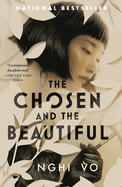
| Publisher: | Tor | |
| Genre: | Magical Realism, Fantasy, Literary, Coming of Age, Lesbian, Asian American, Fiction, Historical, Gay, LGBTQ+ | |
| ISBN: | 9781250820129 | |
| Pub Date: | March 2022 | |
| Price: | $17.99 |
| Now in Paperback |
by Nghi Vo
Everyone and every place remain assuredly familiar here--Nick, Gatsby, Daisy, Tom, Jordan, East Egg, West Egg, and so forth. But Nghi Vo's first novel (after novellas including The Empress of Salt and Fortune) alchemizes F. Scott Fitzgerald's venerable classic The Great Gatsby into the sensational The Chosen and the Beautiful--an NPR Best of 2021 Pick--in which supporting character Jordan Baker assumes narrative control.
Yes, she's still Daisy's friend since childhood; yes, she plays golf competitively; yes, she gets involved with Nick Carraway. Vo's Jordan, however, is also a northern Vietnamese (called Tonkin in the early 1900s) adoptee with a Manhattan Park Avenue address; her adoptive family's wealth allows her societal access--up to a point--despite her obvious, worn-on-the-face foreign origins. She moves through exclusive venues, tony establishments, posh parties, privileged homes, but society's entitled gatekeepers aren't quite willing to welcome fully the rescued orphan as one of their own.
Fitzgerald's obsession with class and status looms throughout, further amplified by Vo's complicating additions of ethnicity and sexual orientation: not only is Jordan clearly other, she's also queer. As if to counterbalance the intensity, Vo's ingenious embellishments and supernatural diversions are many: paper cut-out doppelgängers, dragons that come to life, "demoniacs"--better than Prohibition-banned alcohol--that turn the imagined real.
Classic literature remade is hardly new. Vo's resuscitation of Gatsby suggests comparisons with Jean Rhys's celebrated Wide Sargasso Sea, which gave voice to the first Mrs. Rochester, the proverbial "madwoman in the attic" from Jane Eyre; rather than adapted homage, The Chosen and the Beautiful (like Rhys's novel) brilliantly elevates less-central characters, adding depth and gravitas to women underdeveloped, overlooked. --Terry Hong, Smithsonian BookDragon
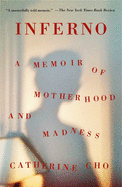
| Publisher: | Holt | |
| Genre: | Family & Relationships, Parenting, Biography & Autobiography, Medical (Incl. Patients), Psychology, Personal Memoirs, Health & Fitness, General, Pregnancy & Childbirth, Motherhood, Psychopathology | |
| ISBN: | 9781250798282 | |
| Pub Date: | March 2022 | |
| Price: | $17.99 |
| Now in Paperback |
by Catherine Cho
Ultimately, Inferno: A Memoir of Motherhood and Madness--a New York Times Book Review Editors' Choice--is a love story: raw, unfiltered, wrenching, lifesaving. Catherine Cho, a Korean American literary agent living in London, makes her debut with a scorching memoir about the postpartum psychosis that nearly destroyed her.
On November 4, 2017, Cho and husband, James, welcomed their son, Cato, into the world. Just before the year ended, the trio flew to the U.S. from London, with plans to introduce Cato to extended family and friends across the country. Their visit would culminate in New Jersey in February with James's parents for Cato's 100-Day celebration, a traditional Korean milestone to mark a baby's survival. Eight days before, Cho breaks: Cato's "eyes turned to devils' eyes," and Cho spirals into psychosis. Involuntarily committed to a psychiatric ward, Cho spent 12 days locked away. She manages to hold on to her family with a "a folded piece of paper where [she's] written her truths in purple marker"--including "I am alive. Real... My husband and son are waiting for me. Real." She remains tenuously tethered to that reality with a notebook--"I recognized it as one of my husband's treasured ones"--in which she manages to record her ordeal.
"It's difficult to know where the story of psychosis begins," Cho writes. She challenges her past: her dysfunctional upbringing with immigrant parents, her "foxhole buddies"--connection with her younger brother, her horrific abuse by an ex-partner. She investigates her present: her complicated relationship with her in-laws and her love-at-first-conversation bond with her husband. She doubts, pretends, hopes for the future: a reunion with her son. Her recovery will prove to be an electrifying return from hell. --Terry Hong, Smithsonian BookDragon
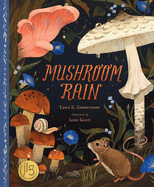
| Publisher: | Sleeping Bear Press | |
| Genre: | Science & Nature, Flowers & Plants, Juvenile Nonfiction | |
| ISBN: | 9781534111509 | |
| Pub Date: | March 2022 | |
| Price: | $17.99 |
| Starred | Children's & Young Adult |
by Laura K. Zimmermann, illust. by Jamie Green
Readers will have an all-new outlook on mushrooms once they've experienced Laura K. Zimmermann's debut picture book, Mushroom Rain. Through simple language and breathtaking illustrations by artist Jamie Green, the wonder and beauty of nature's fungi take shape.
Zimmermann's text makes the extraordinary science of mushrooms a lyrical adventure through a flourishing forest. She tickles the senses with evocative descriptions ("Delicate umbrellas open, red octopus arms rise from the ground.../ Bizarre blooms with strange scents--some like bubble gum, coconut, maple syrup"), then interjects some mystery ("Without warning, mushrooms disappear, no longer seen, but not gone"). Underneath the mushroom blooms, "a hidden form reaches out," the root system capable of stretching for miles. At the same time, mushroom spores that don't settle on the forest floor "soar to the sky, seeding clouds." After the mushroom rain, "strange blooms spring up." This delightful nonfiction picture book is enhanced by Green's striking art, which is a mixture of realism and alluring whimsy. The textures and shading create a setting that feels both true to life and otherworldly and the use of perspective gives readers a mushroom's-eye-view. The backmatter includes additional information, activities and resources for more insight into mushrooms.
Together Zimmermann and Green prove how fascinating--and beautiful--science and nonfiction can be. The picture book's poetic insights and enchanting illustrations are likely to scatter seeds that will take root for future mycologists. --Jen Forbus, freelancer
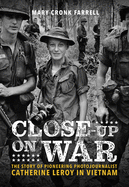
| Publisher: | Amulet Books | |
| Genre: | Biography & Autobiography, Women, Photography, Young Adult Nonfiction, Military & Wars, History | |
| ISBN: | 9781419746611 | |
| Pub Date: | March 2022 | |
| Price: | $22.99 |
| Children's & Young Adult |
by Mary Cronk Farrell
Former journalist Mary Cronk Farrell skillfully relates the story of a remarkable young woman who overcame great odds to capture the Vietnam War on film. Catherine Leroy dared to venture into the "almost exclusively masculine business" of war and war photography and, thanks to her bravery and empathy, the United States received glimpses of the realities happening on the other side of the world.
Leroy, undeterred by her inexperience, gender or petite size (5-foot and less than 100 pounds), set her sights on being a war photographer. She saved to buy a camera, strapped it on, left her home in France and marched into battle. The new photographer was still learning to use her camera and "carried half her body weight in gear" as she patrolled with U.S. soldiers, parachuted into combat with Marines, suffered a grave shrapnel wound and was captured by North Vietnamese forces. She positioned herself as close as possible, and "she focused on the moment when some aspect of war touched someone, soldiers and civilians alike." She put a face on an ugly, brutal conflict with her extraordinary sense of empathy.
Farrell (Standing Up Against Hate) narrates Leroy's exploits through interviews with those who knew her in Vietnam, the photographer's letters home, her quotes and, of course, her photographs. Leroy is not as well-known as her male counterparts in Vietnam, but Farrell's gripping biography has the potential to put a significant dent in that discrepancy. She brings her audience face-to-face with the determination, compassion and fortitude of this groundbreaking woman. Readers who meet Leroy through Close-Up on War will not forget her. --Jen Forbus, freelancer